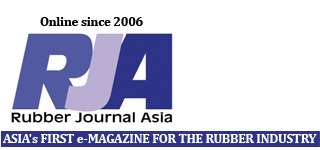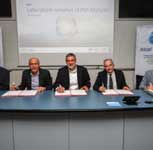French tyre maker Michelin, France’s CNRS (National Centre for Scientific Research), European universities Université Grenoble Alpes (UGA) and Université Savoie Mont Blanc recently launched a new partnership. Over a period of four years, the research teams will strive to develop sustainable hydrogen production technology using water. The joint laboratory is the third LabCom pooling Michelin and CNRS expertise and deploying green hydrogen production technologies.
Currently, the majority of hydrogen produced in the world is qualified as grey, as it is generated from fossil resources such as natural gas. Although this type of hydrogen is the least costly to produce, it is also one of the least eco-friendly. When combined with black hydrogen, obtained via coal gasification, their production generates more than 2% of global carbon dioxide (CO2) emissions. While less polluting alternatives exist, such as blue hydrogen, which is generated from fossil fuels with the capturing of CO2 emissions, there is still no satisfactory method for producing hydrogen sustainably in industrial quantities. Despite the existence of different production methods for green hydrogen using solar and wind power or hydroelectricity, this currently represents less than 5% of total global production.
There are now several methods for producing green hydrogen using water. The first is alkaline water electrolysis, known as AWE3 , which was first discovered over 200 years ago. This process produces hydrogen by circulating an electrical current through a potassium hydroxide solution, using catalysts composed of non-noble metals4 such as nickel, iron or steel. Although it is widely used in industry, this technology does not produce ultra-pure hydrogen at a high rate and is difficult to couple with renewable energies.
To overcome these hurdles, a new type of water electrolyser, which uses a polymer membrane, impermeable to gas (hydrogen and oxygen) was developed in the last few decades: PEMWE5 technology. While this results in ultra-pure gas production with a higher yield, this technology is nevertheless accompanied by new constraints: a reliance on rare and noble metals (platinum, iridium and titanium) and the generation of pollutants linked to the membrane used, such as fluorine.
With support from the Michelin R&D Center in Clermont-Ferrand, the research teams at the Laboratory of Electrochemistry and Physical-Chemistry of Materials and Interfaces (CNRS/ Université Grenoble Alpes/Grenoble INP – UGA/Université Savoie Mont Blanc), under the aegis of CNRS researcher, Frédéric Maillard, hope to develop water electrolysis technology combining the best of both worlds. The aim is to leverage the advantages of AWE technology (using non-noble metals that abound in the Earth’s crust) and PEMWE (using a polymer membrane to achieve high hydrogen production rate, to pressurise the gases produced, with a high gas purity and to couple the electrolyser with renewable energies).
This new technology, called Anion-Exchange Membrane Water Electrolyser (AEMWE), will require the development of nanocatalysts comprising metals that are abundant in the Earth’s crust including nickel, and an anion exchange membrane that is more environmentally compliant.

